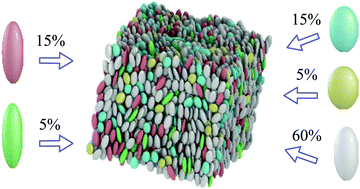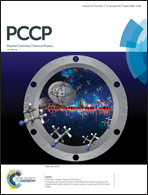Can multi-biaxial mesogenic mixtures favour biaxial nematics? A computer simulation study†
Abstract
Extending the range of existence of biaxial nematic phases is key to their use in applications. Here, we have investigated using extensive molecular dynamics (MD) simulations of a coarse-grained model the possible advantages of using mesogenic mixtures. We have studied the phase organisation of five thermotropic mixtures of biaxial Gay–Berne (GB) ellipsoidal particles having the same volume, but different shapes and interactions, with aspect ratios ranging from rod-like to disc-like and, choosing fractional compositions so as to model a Gaussian dispersity of shapes. The parameterisation is based on a previous GB model with biaxialities of opposite sign for steric and attractive interactions which was shown to exhibit a stable biaxial nematic phase. We found that mixing different biaxial GB particles has an overall stabilising effect on the biaxial nematic phase with respect to temperature, layering and, to some extent also demixing. The mixtures show a decrease of ordering transition temperatures, a widening of nematic temperature ranges, and the formation of smectic phases at lower temperatures.



 Please wait while we load your content...
Please wait while we load your content...